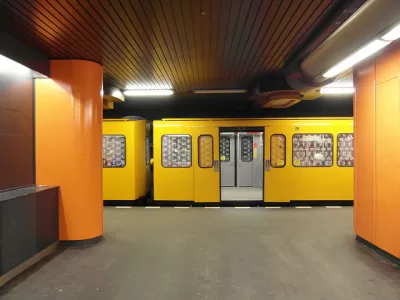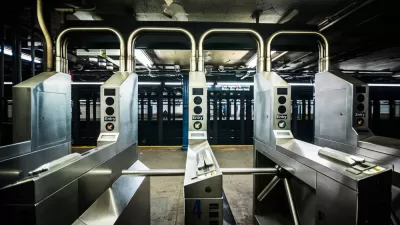The pros and cons of fare-free transit involve a range of issues, from operations logistics and outcomes to costs and fiscal priorities.

Alon Levy explores the debate around free public transportation and the results of fare-free programs implemented in various cities in the U.S. and Europe. Because free transit means agencies do not need to collect fares, it speeds up boarding and eliminates costs such as fare collection systems and some personnel. But, argues Levy, proof-of-payment systems address many of these issues, with relatively minimal costs for any ticket machines or fare inspectors.
He also makes the point that funds for subsidizing free fares have to come from some source and that money could be better used to address any of a range of system issues. "If there is money to make service free, there is money to spend on service improvements, including more metro lines, higher frequency, and wheelchair accessibility where it isn’t already present," adds Levy.
The size of the city and system are also relevant considerations in the discussion about free transit, according to Levy. In smaller cities, proof-of-payment enforcement is more difficult for inspectors to carry out. "The one caveat is that if the plan is to convert a city from one without public transportation to speak of to one with a good system, for example in Los Angeles, then in the future, revenue will become more important."
FULL STORY: Free Public Transportation

Alabama: Trump Terminates Settlements for Black Communities Harmed By Raw Sewage
Trump deemed the landmark civil rights agreement “illegal DEI and environmental justice policy.”

Study: Maui’s Plan to Convert Vacation Rentals to Long-Term Housing Could Cause Nearly $1 Billion Economic Loss
The plan would reduce visitor accommodation by 25% resulting in 1,900 jobs lost.

Planetizen Federal Action Tracker
A weekly monitor of how Trump’s orders and actions are impacting planners and planning in America.

Grand Rapids Mayor Proposes Garage Conversion Plan
The mayor says allowing homeowners to convert garages to dwelling units could alleviate the city’s housing shortage.

Baltimore Ordered to Improve Sidewalk Accessibility
The city is one of many to face lawsuits for failing to comply with the Americans with Disabilities Act.

This Toronto Suburb Has More Bus Riders Than Columbus, Ohio
Brampton, Ontario used gradual improvements in service to prove that if you build it, they will ride.
Urban Design for Planners 1: Software Tools
This six-course series explores essential urban design concepts using open source software and equips planners with the tools they need to participate fully in the urban design process.
Planning for Universal Design
Learn the tools for implementing Universal Design in planning regulations.
Smith Gee Studio
Alamo Area Metropolitan Planning Organization
City of Santa Clarita
Institute for Housing and Urban Development Studies (IHS)
City of Grandview
Harvard GSD Executive Education
Toledo-Lucas County Plan Commissions
Salt Lake City
NYU Wagner Graduate School of Public Service





























